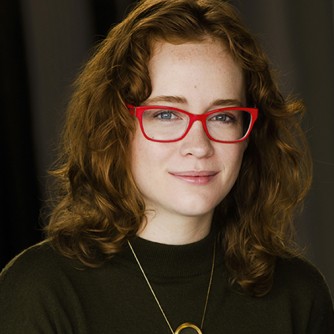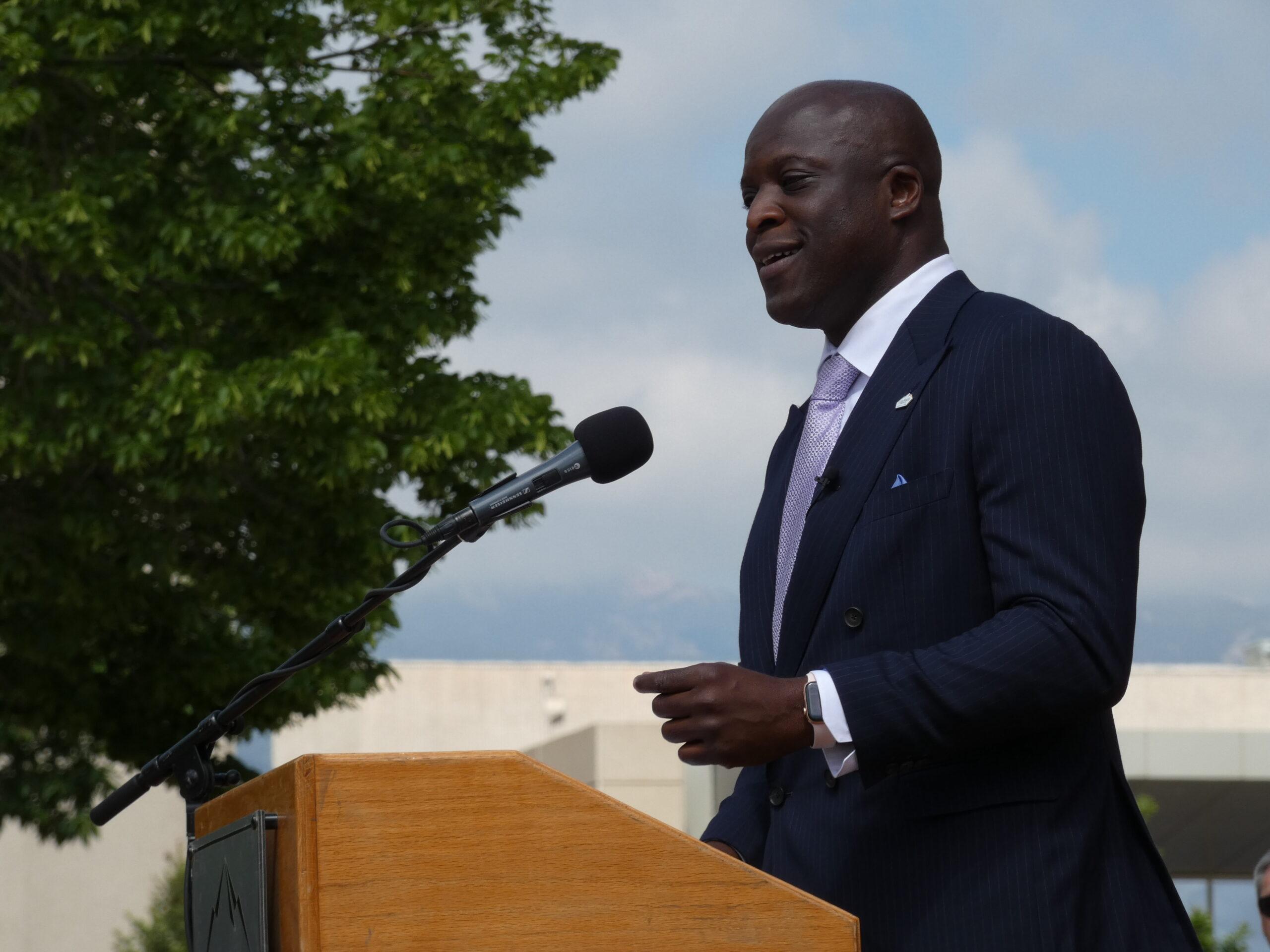This is the first in an ongoing series from Colorado Public Radio News -- Budget Breakdown. As state lawmakers spend the next few months debating how to close the budget shortfall looming for next fiscal year, we'll look at what's at stake and what their descisions mean for the people of Colorado.
_____________
At 325 pages long, Colorado's budget doesn't make for particularly riveting reading. But it's something lawmakers are going over with a fine-toothed comb this year as they try to close a billion-dollar hole in next year's finances. And that will mean cuts. This morning we begin a new series called “the Budget Breakdown.” We wanted to start by learning what the state spends its money on-- so we sent Colorado Public Radio’s Megan Verlee on a little budget road trip.
If you want somebody who can really take you through the state budget – who better to call than the guy who actually has to write it? Meet Governor Hickenlooper’s new budget chief, Henry Sobanet.
When I met Sobanet on a Denver street corner earlier this month, I came armed with something I thought could help explain the budget -- a dollar in coins. As we drive around to various places where the state spends its money, I figured we could pull out the percentage of our figurative tax dollar that the state has budgeted for that service next year.
Now, we're not talking about the whole state budget here -- that's full of billions of federal dollars that just pass through to specific purposes, like highway funds and free school lunches for poor kids, and billions of fees that just pay for specific services, like the money from hunting licenses which pays for the Division of Wildlife.
No, the part of the budget we're interested in is around $7.5 billion, give or take -- that's what the governor and the legislature will actually really have control over next year. And so that’s where the cuts are going to have to come.
SOBANET: "The shortfall is in the General Fund, which is income taxes and sales taxes. It’s the pot of money where there isn’t some preexisting claim on it."
We drive through downtown Denver, past the Pepsi Center, and make a left into a parking garage on Auraria campus, home to UC Denver, Metro State, and Denver Community College.
MV: "While I’m parking, why don’t you give me what percentage of the budget we’ve got coming in here."
SOBANET: "Well, in terms of representing all of higher ed, it’s approximately 9 cents out of our hundred pennies that represent the budget. So here’s 9 cents."
To give you some perspective - next year’s General Fund could be 14% smaller than this year’s - that’s like taking 14 cents out of our dollar. That means more cuts to budgets that are already hurting. Higher education's share has been shrinking for years -- two decades ago it took up almost twice as much of the General Fund. Yet right here where we parked, there’s a new building going up.
SOBANET: "We’ve been able to keep higher education going. Stimulus dollars have propped up a lot of programs and those are expiring."
From here we head west. On Federal Boulevard, we stop at a big, institutional-looking building with a brightly colored abstract statue of a family out front. This is Denver’s Human Services headquarters. Inside people sign up for food stamps, welfare. From here inspectors go out to check up on abused children and vulnerable adults. How much of our tax dollar is this? Another nine cents.
Sobanet says this is a hard place to cut, both politically, and morally.
SOBANET: "A lot of the services through here deal with the neediest and the most helpless. So I think what protects this is the safety net concept and some of the first roles of public programs."
This is the kind of stuff a billion dollar budget shortfall makes you think about -- what are the core responsibilities of government?
To get to our next stop, we follow a string of ‘Do Not Stop for Hitchikers’ signs from highway six through the edges of Lakewood. We’re on our way to Camp George West, a minimum security facility. What we find when we arrive is a rustic-looking stone arch, row of old cabins -- it kind of looks like a summer camp... surrounded by razor wire. Of course in recent years, Colorado’s built plenty of modern high security prisons -- the kind with big walls and grim cell blocks. And those aren’t cheap.
SOBANET: "Corrections is unfortunately a major chunk of our budget. But by the same token, it’s the state analogy to the federal national defense. Public safety is a core function of government. Many would argue it’s the first function of government, is to protect private property and then to punish people who break the law."
So how much of our tax dollar goes here?
SOBANET: “For the Department of Corrections, we're talking about another nine pennies out of our hundred.”
MV: “So you could totally eliminate the Department of Corrections and you would not have saved as much money as we've lost in this recession?”
SOBANET: “Correct. You could get rid of every prison guard and we're only half way there. You know, we can't efficiency our way out. We have to stop doing things or cut back severely on things to get out of the conundrum we're in.”
MV: “Everything seems to be nine pennies.”
SOBANET: “Well, we're about to get to the big departments.”
To find a representative of one of those big departments, we cruise the western edge of Lakewood, down to one of the many nondescript office buildings that line the big roads out here. This one has a pharmacy sign in one window -- the only indication that the place is full of doctor’s offices, doctors who take Medicaid, the government health insurance for the poor.
SOBANET: “Twenty-two cents needs to come to reflect spending on Medicaid.”
MV: “That is a lot. That's what, a fifth of the General Fund budget right there.”
HS: “Your math is impeccable.”
]Here's a number that really surprised me -- one in ten Coloradans is on Medicaid. One in ten. That’s almost double what it was a decade ago. Blame the recession.
SOBANET: "It's the conundrum of government. When money drops from the economic situation, more people qualify in."
This is a big part of the state’s budget -- 22 cents out of the general fund dollar next year -- but Sobanet wonders how many people realize that.
SOBANET: "I think a lot of what state government does is not readily visible to people in their daily lives. Even though one in ten Coloradans are on the Medicaid program, by definition, nine in ten are not. So ninety percent of the people may have no understanding about a program that supports the poor and indigent and disabled."
And now, on to the single biggest expense in the budget. We drive down quiet streets, past little brick houses and stop at yet another generic government building -- boxy architecture, big American flag, fenced-in yard. The people eating up your tax dollar here aren’t patients or prisoners, they’re not bureaucrats -- they’re children.
MV: "We’re here at an elementary school in Lakewood. I think this is South Lakewood Elementary. Looks likes lunch is going on. I've got our bag of tax dollar coins. How much are we taking out?”
SOBANET: “43 cents of what's left.”
MV: “Wow. 43% of the state budget goes into schools?”
SOBANET: “Of the state's general fund goes to schools.”
People are always saying how public schools need more money, not less. But you can’t really talk about big budget cuts until you talk about cutting schools.
SOBANET: "43% is 43%. If you’re going to exclude that, you’re going to have disproportionate cuts elsewhere. It’s a shame. Voters rank K12 education typically at the top of their list of what should be protected. But this is a remarkable downturn."
So there you have it. The state’s general fund budget. Your dollar of income and sales taxes -- 43 cents of it will go to schools... 22 cents will go to Medicaid … nine cents each to prisons, colleges, and human services. Add it up and there are just a few pennies left over for the courts, for public health, for the governor and legislature. And even though they’re the government, and you elected them -- they have a lot less control over how this dollar gets divvied up than you might think.









